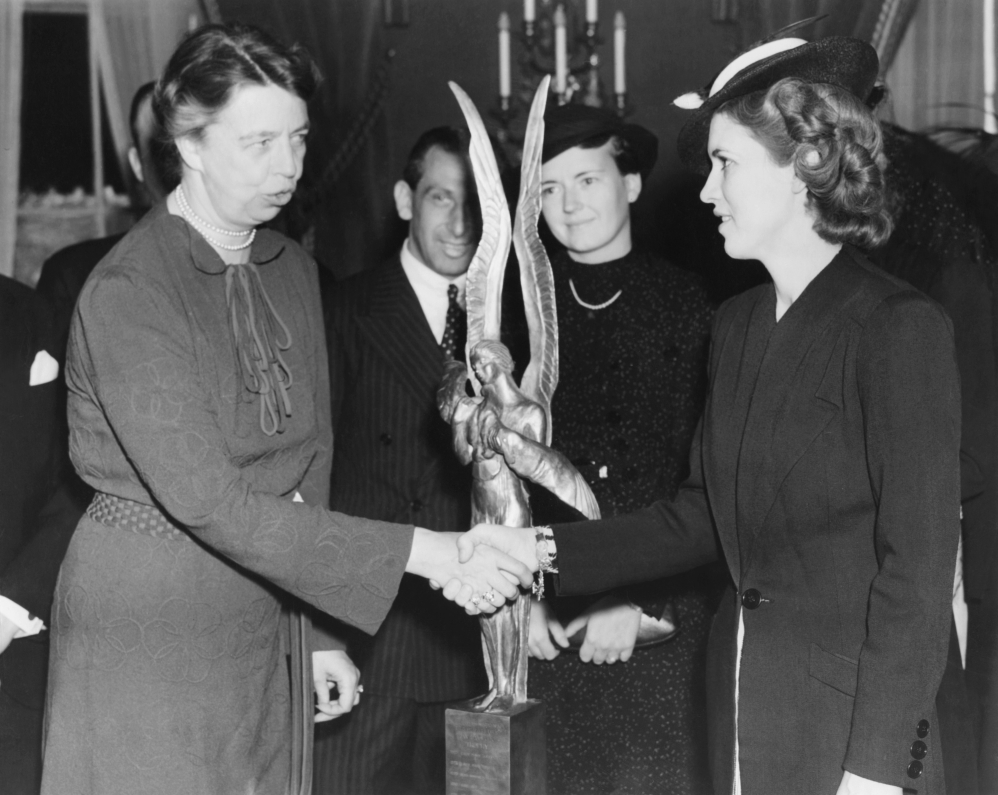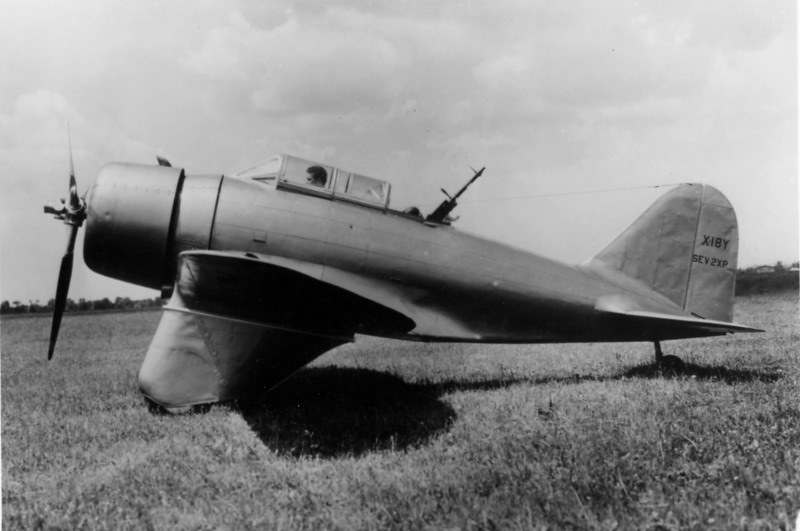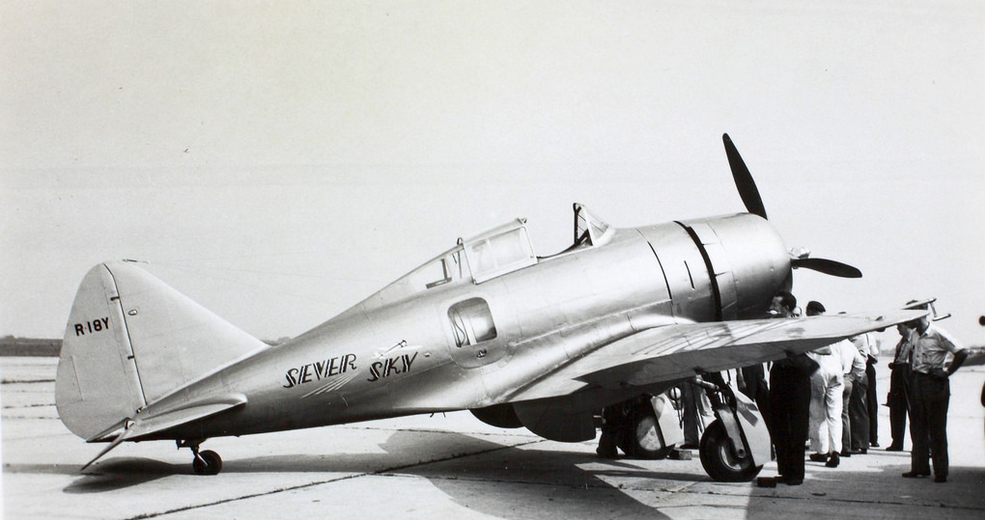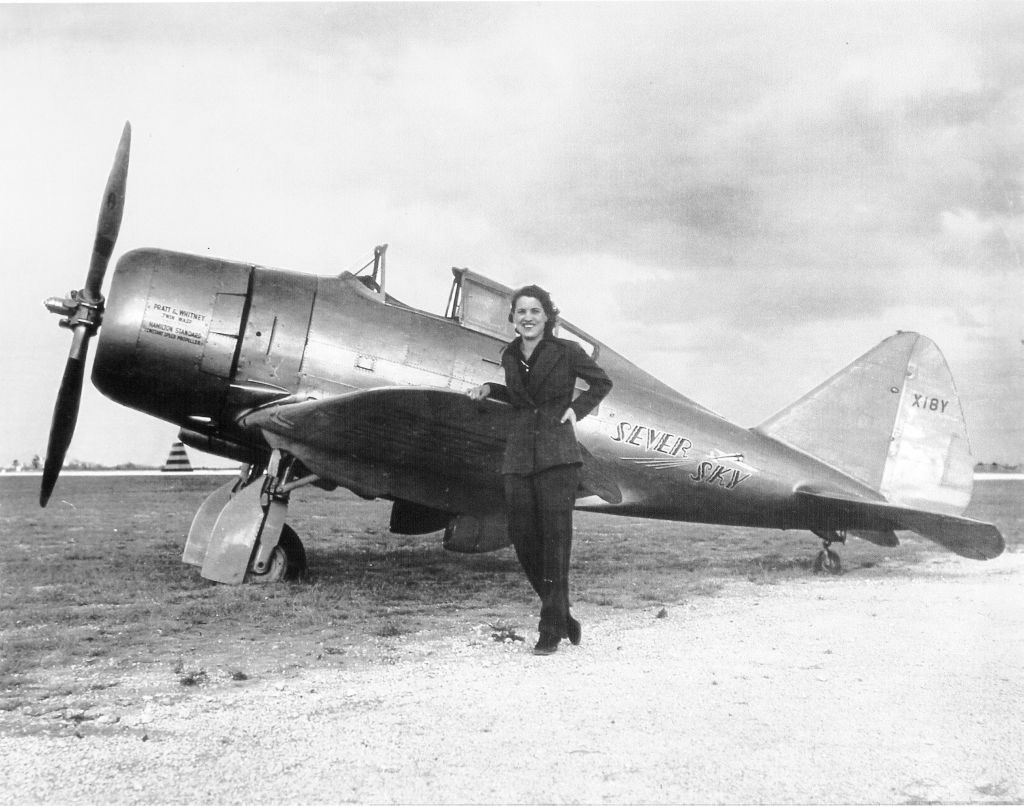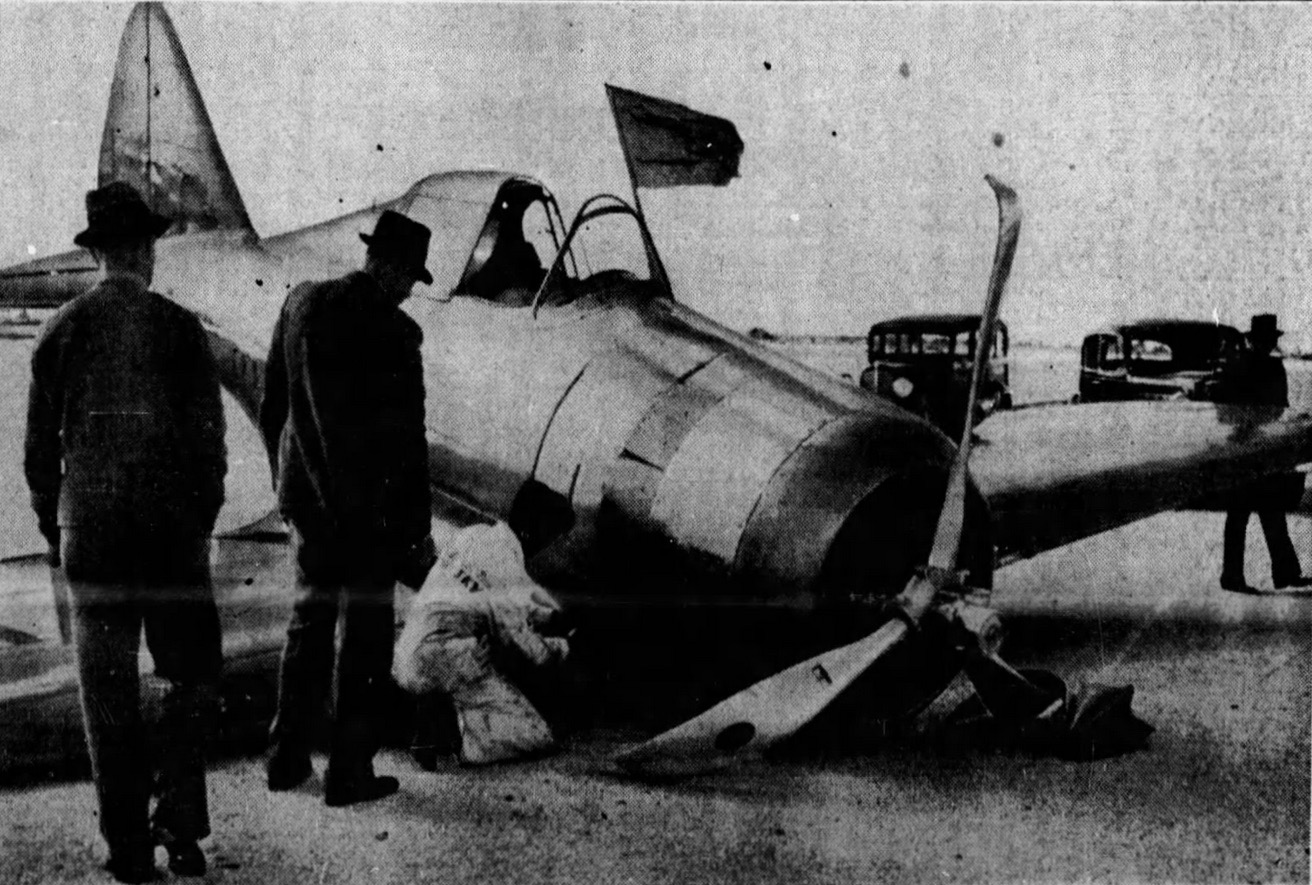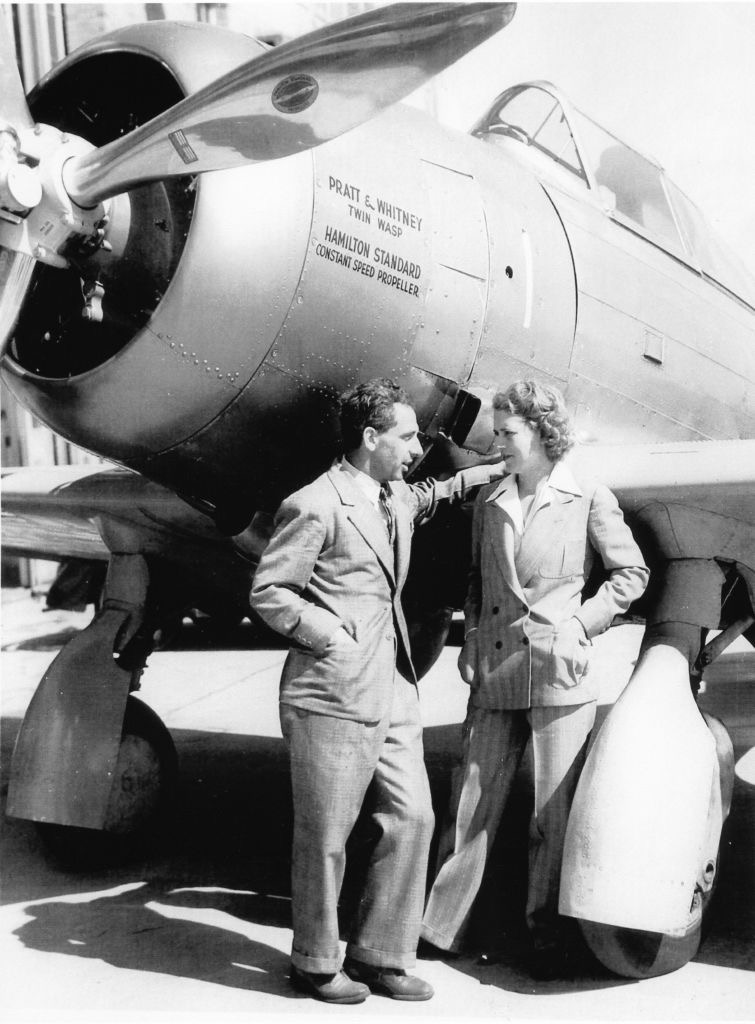
3 December 1937: Jackie Cochran flew a Seversky SEV-S1, R18Y,¹ a variant of the P-35 fighter, from Floyd Bennett Field, Brooklyn, New York, to Miami, Florida, in 4 hours, 12 minutes, 27.2 seconds.
On the same day, Александр Николаевич Прокофьев-Северский (Alexander Nikolaievich Prokofiev de Seversky), the airplane’s designer, flew a second P-35-type airplane from New York to Havana, Cuba, in 5 hours, 3 minutes, 5 seconds.
The Miami Daily News reported:
. . . Jaqueline Cochran, 26-year-old New York woman flier, set a speed record of four hours and 12 minutes in a flight from New York City which ended at 3:21 p.m. yesterday at municipal airport. Averaging 278.13 miles an hour on her trip south, Miss Cochran beat the fastest time ever recorded either way between the two cities by eight minutes. That mark was set northbound by Howard Hughes. . .
. . . A New York-Havana non-stop flight record also was set yesterday when Maj. Alexander de Seversky flew the 1,350 miles in five hours and two minutes—two hours and one minute faster than Lieut. Commander Frank Hawks’ record of 1931. The new record-holder is expected to fly to Miami today.
— Miami Daily News, Vol. XLII, No. 358, Saturday, 4 December 1937, Page 1, Column 8, and Page 2, Column 5
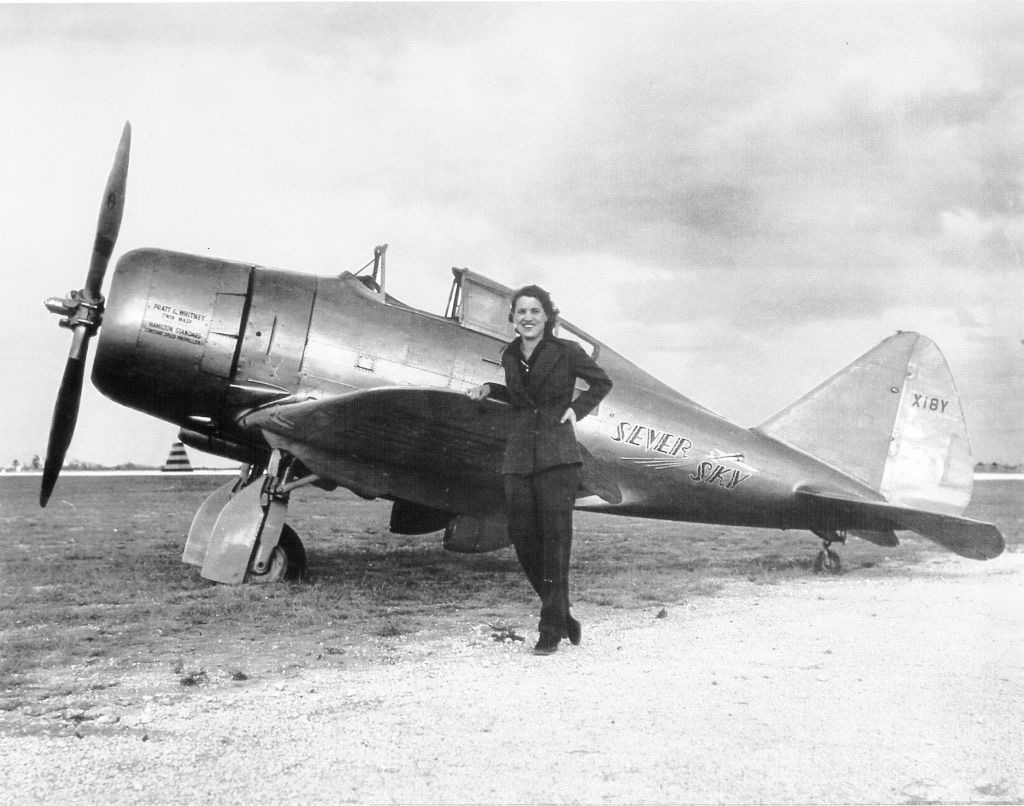
“. . . Sasha [de Seversky] became convinced that I could win the big New York-to-Miami air race coming up. What better rebuttal could he have than to have his plane flown 300 miles per hour [483 kilometers per hour] over a measured, timed course and to have it all done by a woman? The Army Air Forces were canceling further orders because they saw the airplane as dangerously faulty and not up to the specifications they had ordered.
“Sasha installed an extra gas tank in place of a seat for me. It wasn’t very comfortable, but what was worse was that the plane had never been test-flown with a full load of gas. I took off and discovered that the center of gravity was somewhere in the nose. God, I nearly put that plane into the bay just south of what is now Kennedy Airport. It porpoised terribly for over an hour. . .
“I did get the nose up in time to avoid a swim, but until I burned out most of the fuel in the seat tank, I really had to hold on for a rough ride—up and down the sky. From Washington D.C., on, the situation straightened out and I got the record Sasha wanted so badly. . . .”
—Jackie Cochran: An Autobiography, by Jacqueline Cochran and Maryann Bucknum Brinley, Bantam Books, New York, 1987, Pages 150–151.
“On five different occasions I have landed after a speed flight with less than two minutes of fuel remaining and once—on a record flight from New York to Miami—my engine went dead just as my wheels touched the runway. This was because of a risk I had not considered. When I reached the destination, a squadron of Navy planes was in formation flight over the airport and I had to circle before landing.”
—The Stars At Noon, by Jacqueline Cochran, Little, Brown and Company, Boston, 1954, Chapter IV at Page 72.
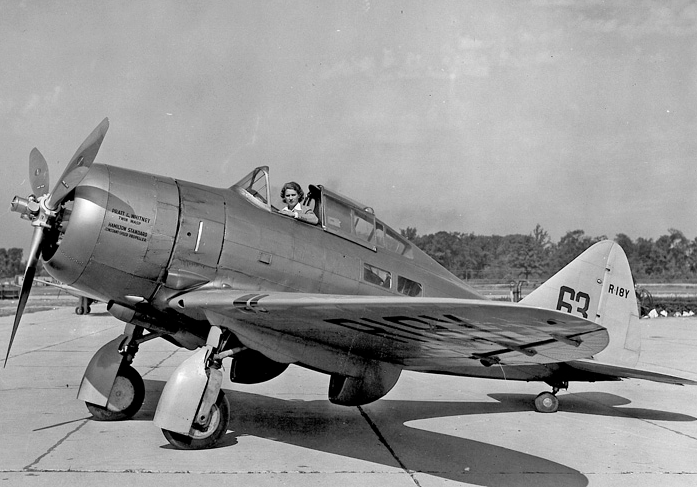

Designed by Alexander Kartvelishvili, the airplane had originally been built as the Seversky II X, a single-place open cockpit monoplane with fixed landing gear. It was powered by an air-cooled, supercharged 1,666.860-cubic-inch-displacement (27.315 liter) Wright Aeronautical Division GR1670A1 Whirlwind, a two-row, 14-cylinder radial engine. The GR1670A1 had a compression ratio of 6.75:1 and was rated at 775 horsepower at 2,400 r.p.m., and 830 horsepower at 2,400 r.p.m. for takeoff, using 87-octane aviation gasoline. It drove an experimental three-bladed Hamilton Standard constant-speed propeller through a 16:11 gear reduction. The GR1670A1 was 45 inches (1.143 meters) in diameter, 52-25/32 inches (1.341 meters) long, and weighed 1,160 pounds (526 kilograms).
The Seversky II X was reconfigured as two-place monoplane fighter to compete in a fly-off at Wright Field against the Curtiss-Wright Model 75 Hawk and the Northrop 3A for the Air Corps fighter contract in 1935. The airplane was redesignated SEV-2XP and carried the registration mark X18Y.
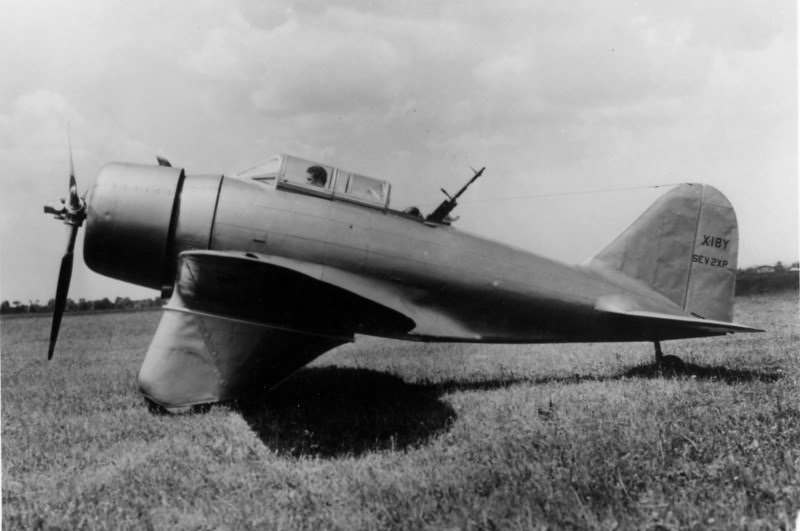
In mid May 1935, de Seversky was flying the prototype from the company’s Farmingdale, New York factory toward Wright Field, located near Dayton, Ohio. The airplane’s engine overheated and stopped. He made a forced landing at a small hilltop landing field near St. Clairsville, Ohio, during which the airplane was damaged. Several weeks were required to make repairs.
In the meantime, de Seversky had seen his competitors’ entries. Both were single place pursuits with retractable landing gear. He realized that his -2XP was completely outclassed.
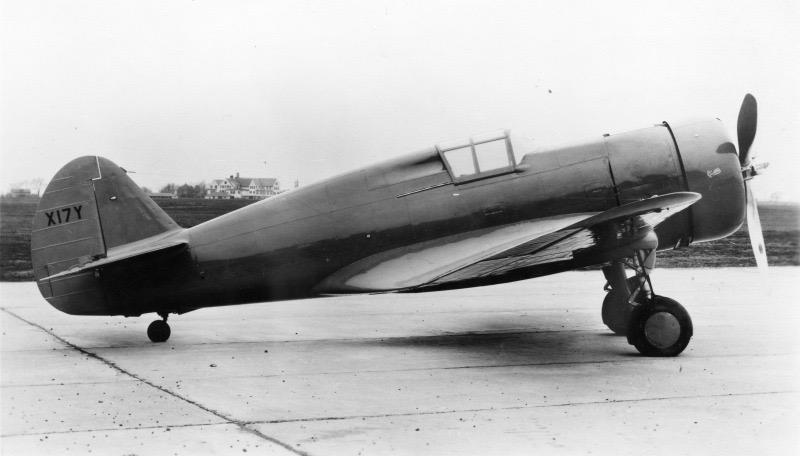
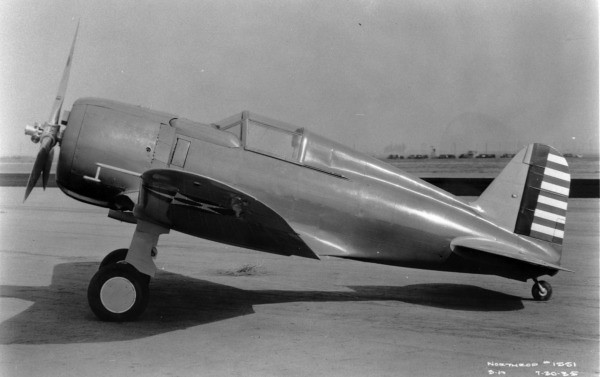
The prototype was once again rebuilt. It was now also a single-place airplane with retractable landing gear. Designated SEV-1XP, X18Y was initially powered by a 1,823.129 cubic inch displacement (29.876 liters) 860-horsepower Wright Cyclone, which was quickly upgraded to a Wright GR-1820G4. This was also a single-row, nine-cylinder radial engine. The G4 had a compression ratio of 6.45:1 and required 87-octane aviation gasoline. It was rated at 810 horsepower at 2,100 r.p.m., and 1,000 horsepower at 2,200 r.p.m.for takeoff. The engine was 47¾ inches (1.213 meters) long, 54¼ inches in diameter, and weighed 1,210 pounds (549 kilograms). The SEV-1XP had a fuel capacity of 160 U.S. gallons (606 liters) and carried 15 gallons (57 liters) of lubricating oil.
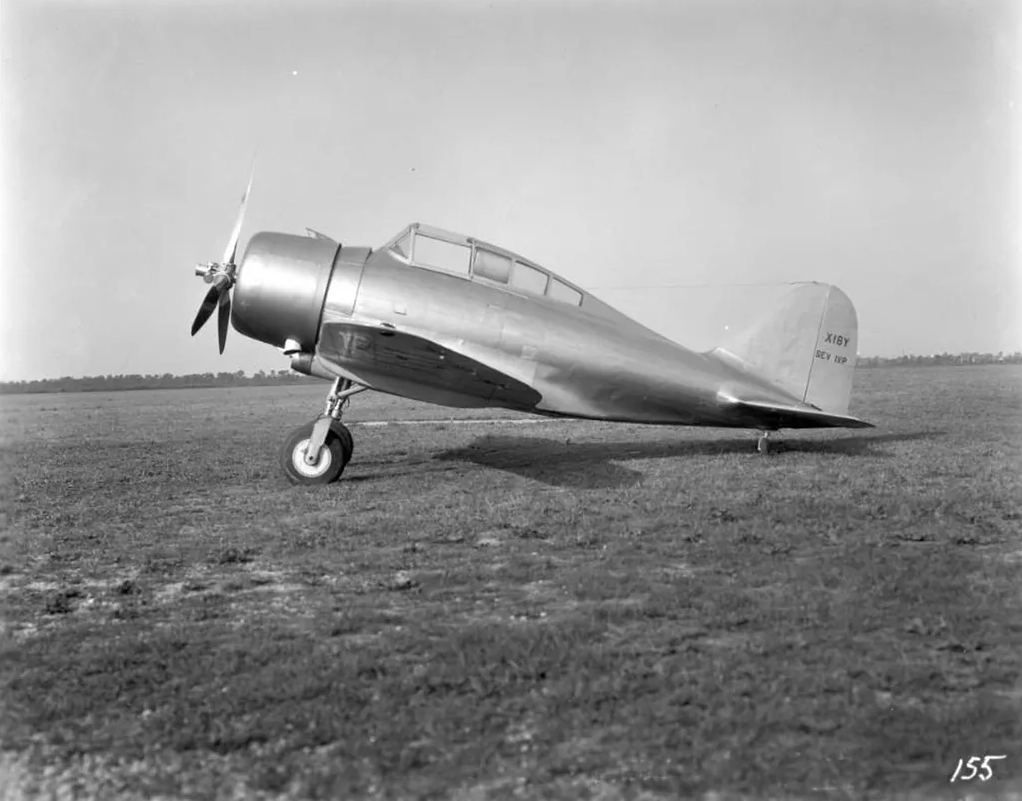
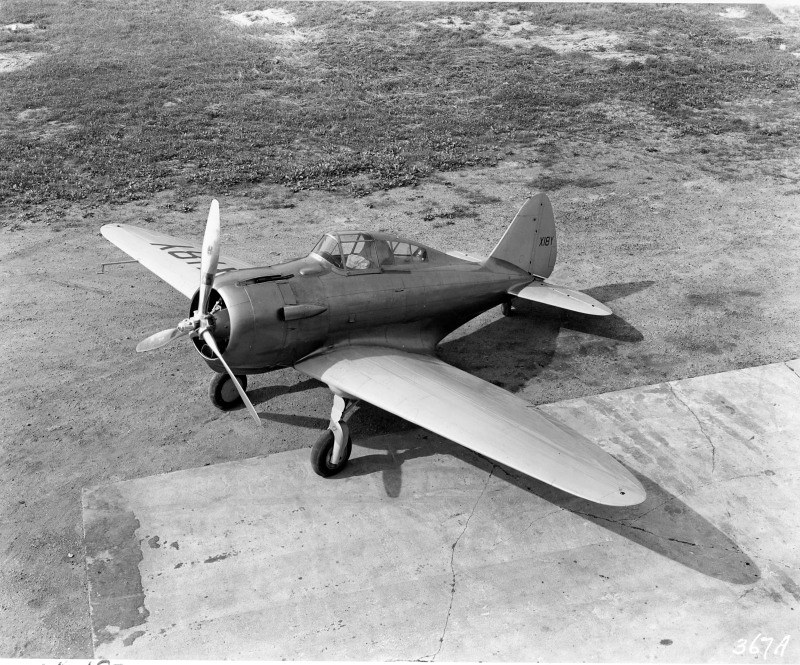
In April 1936, X18Y’s engine was once again upgraded, this time to a Wright GR-1820G5, s/n 23233.
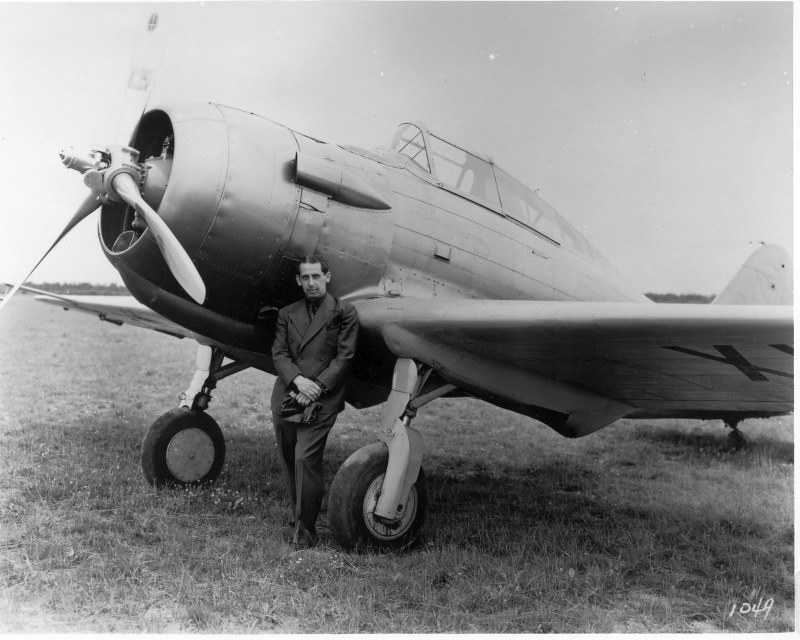
Another engine change came in January 1937. The Wright Cyclone was replaced by a Pratt & Whitney Twin Wasp R-1830-13, s/n 312. With the Twin Wasp, NR18Y’s designation was changed to SEV-S1. (Department of Commerce records continued to refer to it as SEV-1XP.) The -13 was a supercharged, two row, fourteen cylinder radial engine with a compression ratio of 6.7:1, requiring 91/93-octane aviation gasoline. It had a normal power rating of 900 horsepower at 2,550 r.p.m., to an altitude of 10,000 feet (3,048 meters), and 1,050 horsepower at 2,700 r,p,m for takeoff. The airplane retained the same Hamilton Standard propeller that had been used with the R-1820G5, which it drove through a 3:2 gear reduction. The R-1830-13 was 48.06 inches (1.221 meters) long, 59.25 inches (1.505 meters) in diameter, and weighed 1,370 pounds (621 kilograms).
In August 1937, the R-1830-13 was replaced by a R-1830 SB-G, s/n 112. Again, the same propeller was used. The SB-G had a normal rating of 900 horsepower at 2,450 r.p.m., to 6,500 feet (1,981 meters), and 1,000 horsepower at 2,600 r.p.m. for takeoff. 87-octane fuel was required. The SB-G had the same gear reduction ratio as the -13. It was 48.00 inches (1.219 meters) long, 55.48 inches (1.409 meters) in diameter, and weighed 1,284 pounds (582 kilograms).
On 30 August 1937, the Seversky SEV-1XP was issued a restricted registration, R18Y. As it was then configured, it had an actual empty weight of 4,390 pounds (1,991 kilograms) and gross weight of 6,290 pounds (2,853 kilograms).
Frank Sinclair, Seversky’s chief test pilot, flew R18Y in the 1937 National Air Races, held at Columbus, Ohio. Sinclair’s race number, 63, was painted on the vertical fin. On 4 September, he finished the Bendix Trophy Race from Burbank, California, to Columbus, in fourth place with a time of 11 hours, 2 minutes, winning a $2,000 prize. (Jackie Cochran flew a Beech Staggerwing in the Bendix, beating Sinclair and R18Y by 33 minutes.) Two days later, 6 September, Sinclair placed fourth in the Thompson Trophy pylon race. The Seversky averaged 252.360 miles per hour (406.134 kilometers per hour).
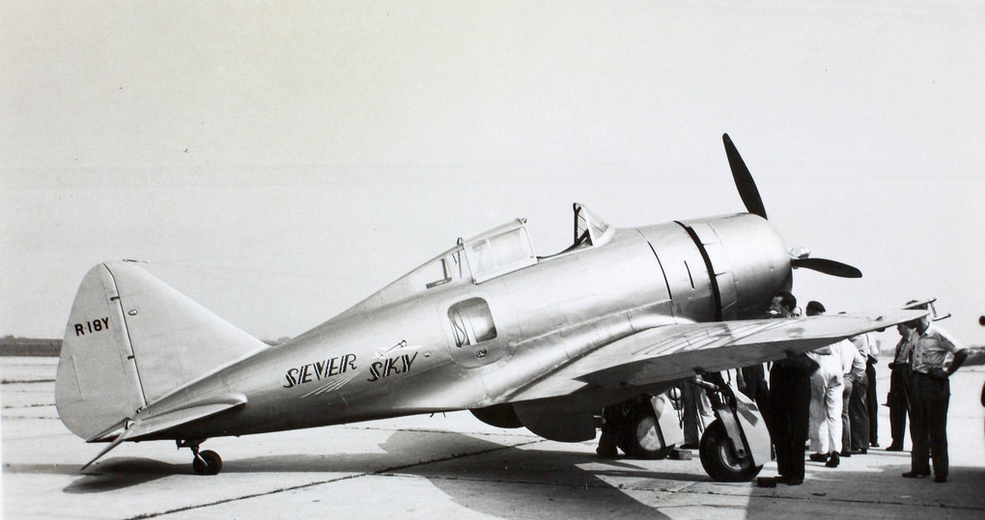
On 27 October 1937, the Seversky’s registration reverted to X18Y.
Following an accident at Miami, 13 December 1937, the Department of Commerce suspended X18Y’s registration, noting “AIRCRAFT NOT APPROVED FOR RELICENSING”
It is believed that the prototype was scrapped.
¹ At that time, experimental and restricted category aircraft were prohibited from displaying the letter “N” at the beginning of their registration mark.
© 2020, Bryan R. Swopes
